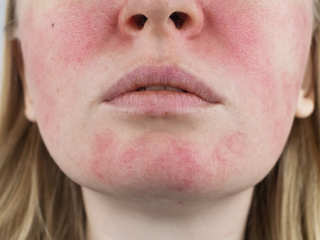If your skin seems to throw a fit every time you try something new, you’re not alone. Burning, stinging, itching, flaking—sometimes, it feels like even air can trigger a reaction. But here’s the comforting truth: sensitive skin isn’t impossible to manage. In fact, the more you understand it, the easier it gets to calm it down—and keep it calm.
So let’s slow down, take a deep breath, and gently unpack what’s going on beneath the surface. Because the key to soothing sensitive skin isn’t just in the products—it’s in the approach.
So... What Is Sensitive Skin Really?
Imagine your skin as a protective wall. When that wall is strong, it keeps the good stuff in—like hydration—and the bad stuff out—like pollution, harmful bacteria, and harsh ingredients. But when that wall starts to break down, skin becomes vulnerable. Tiny cracks in the barrier allow irritants to sneak in, and suddenly, everyday things—like a change in weather or a new face wash—feel like an attack.
Did you know?
Over 60–70% of people say they have some form of skin sensitivity. But it doesn’t always look the same—it can show up as dryness, tightness, redness, or even itchiness.
Sensitive skin is, at its core, a skin barrier issue. And here’s the twist: it’s not always something you’re born with. Many people develop skin sensitivity over time. Maybe after using too many actives. Maybe after a stressful period. Or maybe it shows up when seasons change, hormones shift, or the skin just says, “Enough.”
Curious if what you’re experiencing is true skin sensitivity? You need to understand the signs and symptoms, to know your skin better.
Why Does Everything Burn or Flare Up?
It often starts with one small reaction—maybe a bit of redness or tingling after a product. But over time, the skin enters a reactive cycle. The barrier weakens further, moisture escapes, and inflammation takes center stage. Suddenly, even the mildest products feel too harsh.
One of the biggest culprits? Overuse of active ingredients. Retinol, salicylic acid, glycolic acid—they all sound promising, but in excess, they can strip away the very oils and lipids the skin relies on to stay balanced. Without that support, the skin becomes raw, thin, and extra sensitive.
It’s not just about products either. Pollution, UV exposure, mental stress, and even lack of sleep can increase inflammation, slow skin repair, and leave the skin more prone to flare-ups. It’s like a silent storm building beneath the surface—and the skin’s way of screaming for help.
Feeling overwhelmed by triggers? Here’s how to live fully with sensitive skin without missing out on joy, confidence, or experiences.
How to Actually Calm It Down
Step 1: Strip it all back. Sensitive skin care doesn’t need a 10-step routine—it needs simplicity. That means gentle, fragrance-free cleansers, barrier-supporting moisturizers, and broad-spectrum sunscreen. That’s it—just a 3 step sensitive skin care routine, where every product should feel like a hug, not a confrontation.
Step 2: Hydrate consistently. Not just with moisturizers, but with enough water, a balanced diet. Dehydrated skin is often mistaken for sensitive skin—and while the two overlap, proper hydration can dramatically reduce reactivity.
Step 3: Listen and observe. If skin starts to sting or feel tight after a product, don’t push through. Pause. Swap it for something simpler. Let the skin settle before trying anything new. With reactive skin, less really is more.
Bonus Tip: Give Skin Time to Heal—Especially at Night
Nighttime is when skin goes into repair mode. That makes the bedtime routine incredibly important for sensitive skin relief. Applying a deeply hydrating moisturizer before bed—especially one rich in fatty acids and anti-inflammatory botanicals—can fast-track the healing process.
Many find that after just a few days of gentle, consistent care, their skin starts to soften. Redness reduces. The tightness eases. And slowly, confidence returns. It’s a quiet shift—but a powerful one.
Sensitive Skin Isn’t a Flaw. It’s a Signal.
When skin reacts, it’s not being dramatic. It’s being honest. And that honesty can lead to the most nurturing, mindful care routine you’ve ever had. Sensitive skin is a reminder to slow down, choose intentionally, and prioritise healing over hustle.
With the right products, the right rhythm, and a little patience, even the most reactive skin can feel soothed, balanced, and resilient again. Work with your skin, not against it.


